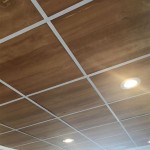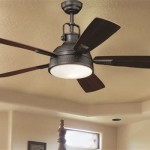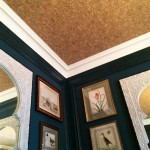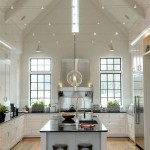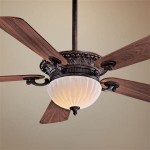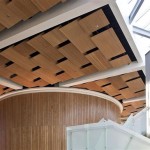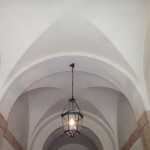Types of Ceiling Finishes: A Visual Guide
Ceiling finishes play a crucial role in the overall aesthetic and functionality of a space. They not only conceal structural components but also contribute to the room's lighting, acoustics, and perceived height. Selecting the right ceiling finish demands careful consideration of factors such as budget, design preference, maintenance requirements, and structural limitations. This article provides an overview of various ceiling finishes, accompanied by descriptions that will assist in making informed decisions.
Drywall: The Ubiquitous Choice
Drywall, also known as gypsum board, is the most common ceiling finish in residential and commercial construction. Its popularity stems from its affordability, ease of installation, and adaptability to various design styles. Drywall ceilings typically consist of large sheets of gypsum plaster sandwiched between two layers of paper. These sheets are attached to ceiling joists or framing with screws or nails, and the seams are then taped and mudded to create a smooth, seamless surface. Once the mudding compound is dry, the entire surface is sanded and primed, ready for painting or texturing.
One of the primary advantages of drywall is its versatility. It can be easily cut and shaped to accommodate various architectural features, such as recessed lighting, skylights, and curved walls. Furthermore, drywall can be textured to create a variety of visual effects, ranging from subtle orange peel textures to more pronounced knockdown textures. Texturing can help to conceal imperfections in the drywall surface and add visual interest to the ceiling.
However, drywall is not without its drawbacks. It is susceptible to water damage and can be difficult to repair if it becomes cracked or damaged. Also, drywall installation can be a dusty and messy process, requiring proper ventilation and dust control measures. Despite these limitations, drywall remains the go-to choice for most ceiling applications due to its cost-effectiveness and adaptability.
When considering drywall, the type of drywall should be considered. Standard drywall is suitable for most areas, but moisture-resistant drywall, often referred to as "green board" or "blue board," is recommended for bathrooms and kitchens where humidity levels are higher. Fire-resistant drywall, typically identified by its red or pink color, is required in certain fire-rated assemblies to provide increased protection in the event of a fire.
Plaster: A Classic Option
Plaster ceilings represent a more traditional approach to ceiling finishing. Plaster is a mixture of lime, sand, and water, and it is applied to a lath framework in multiple layers to create a smooth, durable surface. Plastering is a more labor-intensive process than drywall installation, requiring skilled tradespeople with expertise in mixing and applying plaster. As such, plaster ceilings are typically more expensive than drywall ceilings.
One of the key advantages of plaster is its superior durability and longevity. Plaster is much harder and more resistant to impact damage than drywall. It is also more fire-resistant and provides better sound insulation. Furthermore, plaster ceilings offer a unique aesthetic appeal, with a smooth, seamless surface that exudes quality and craftsmanship. Plaster can also be molded and sculpted to create intricate decorative features, such as cornices, medallions, and arches.
However, plaster ceilings also have some drawbacks. They are more susceptible to cracking than drywall, especially in areas with significant temperature or humidity fluctuations. Repairing plaster ceilings can be challenging, requiring specialized skills and materials. Also, plastering is a wet and messy process, requiring careful preparation and cleanup.
Despite these challenges, plaster ceilings remain a popular choice for high-end residential and commercial projects where durability, aesthetics, and sound control are paramount. Modern plastering techniques often incorporate additives to improve the plaster's workability, strength, and resistance to cracking, while lime plaster provides a breathable alternative to gypsum plaster.
Suspended Ceilings: Flexibility and Accessibility
Suspended ceilings, also known as drop ceilings or T-bar ceilings, are commonly used in commercial and institutional buildings to conceal mechanical systems, wiring, and ductwork. They consist of a grid of metal channels suspended from the structural ceiling, with lightweight tiles or panels inserted into the grid. Suspended ceilings offer a number of advantages, including ease of installation, accessibility to above-ceiling utilities, and sound absorption.
One of the primary benefits of suspended ceilings is their flexibility. The grid system can be easily reconfigured to accommodate changes in room layout or mechanical system requirements. The tiles or panels can also be easily removed and replaced for maintenance or repairs. In addition, suspended ceilings can improve the acoustics of a space by absorbing sound and reducing reverberation.
Suspended ceilings come in a variety of materials, including mineral fiber, fiberglass, and metal. Mineral fiber tiles are the most common and are available in a range of textures, colors, and patterns. Fiberglass tiles offer superior sound absorption and are often used in spaces where noise control is critical. Metal tiles provide a more durable and aesthetically pleasing option, suitable for high-end commercial applications.
While suspended ceilings offer numerous advantages, they also have some limitations. They can reduce the perceived height of a room, as the ceiling grid is typically suspended several inches below the structural ceiling. They can also be less aesthetically pleasing than other ceiling finishes, particularly in residential settings. However, advancements in suspended ceiling technology have led to the development of more visually appealing options, such as concealed grid systems and curved panels.
Wood Ceilings: Natural Warmth and Elegance
Wood ceilings bring a unique warmth and elegance to any space. They can be constructed from solid wood planks, engineered wood panels, or tongue-and-groove boards. Wood ceilings offer a natural aesthetic appeal, with a variety of wood species, grains, and finishes to choose from. They can also improve the acoustics of a room by absorbing sound and reducing reverberation.
One of the key benefits of wood ceilings is their visual appeal. The natural beauty of wood can add character and warmth to a room, creating a welcoming and inviting atmosphere. Wood ceilings can be stained, painted, or left natural to complement the existing decor. They can also be installed in a variety of patterns, such as herringbone, chevron, or diagonal, to add visual interest.
Wood ceilings provide a degree of sound absorption depending on the type of wood, construction method, and any added acoustic backing. They can help to dampen sound and reduce echo, making a space more comfortable and functional.
However, wood ceilings also have some limitations. They can be more expensive than other ceiling finishes, particularly if rare or exotic wood species are used. They can also be susceptible to moisture damage, requiring proper sealing and ventilation to prevent warping or rot. Furthermore, wood ceilings may require more maintenance than other ceiling finishes, such as regular dusting and refinishing. Fire safety considerations are also important for timber ceilings, and fire-retardant treatments should be applied as necessary.
Decorative Ceiling Tiles: Adding Texture and Pattern
Decorative ceiling tiles offer a way to add texture, pattern, and visual interest to a ceiling without the extensive labor or expense of other finishes. These tiles are typically made from materials like embossed PVC, tin, or even pressed paper, and they come in a wide array of designs ranging from classic Victorian patterns to modern geometric shapes.
The primary advantage of decorative ceiling tiles is their ease of installation. Many types of decorative tiles can be glued directly to an existing ceiling surface, making them a suitable option for DIY projects or quick room refreshes. Other types are designed to be installed within a suspended ceiling grid, providing an opportunity to update the look of a commercial space without a complete overhaul.
Beyond their aesthetic appeal, some decorative ceiling tiles also offer functional benefits. Embossed or textured tiles can help to diffuse sound, reducing echo and reverberation in a room. Certain materials, like tin, may also offer a degree of thermal insulation. The choice of material will determine the durability and maintenance requirements of the tiles. PVC tiles are waterproof and easy to clean, while tin tiles may require periodic sealing to prevent rust.
While decorative ceiling tiles can enhance the look of a room, it's important to consider the overall design and scale of the space. Overly ornate tiles may overwhelm a small room, while a simple pattern can add subtle elegance to a larger space. It is also crucial to ensure that the tiles are compatible with the existing ceiling structure and any lighting fixtures or other ceiling-mounted elements.
Exposed Ceilings: Embracing the Industrial Aesthetic
Exposed ceilings represent a departure from traditional finished ceilings, embracing the raw, industrial aesthetic. This type of ceiling finish leaves the structural elements of the building visible, including ductwork, pipes, beams, and concrete slabs. Exposed ceilings are often found in loft apartments, converted warehouses, and contemporary commercial spaces.
The primary advantage of exposed ceilings is their unique visual appeal. They create a sense of openness and height, and they can add character and personality to a space. Exposed ceilings are also a cost-effective option, as they eliminate the need for additional finishing materials and labor. However, some preparation is usually needed. This can include cleaning and painting any exposed ductwork and leveling any surfaces.
Exposed ceilings can present acoustical challenges. The hard surfaces of concrete and metal tend to reflect sound, creating echoes and reverberation. To mitigate these issues, acoustical panels, baffles, or spray-on treatments can be incorporated into the ceiling design.
Considerations for exposed ceilings include the location of lighting and wiring. Track lighting or pendant lights can be used to illuminate the space without concealing the ceiling structure. Wiring can be run through conduits or cable trays to maintain a clean and organized appearance.

Ceiling Finishes

The Diffe Types Of Ceiling Textures You Need To Know About Surepro Painting

Ceiling Finishes

20 Ceiling Texture Types To Know For Dummies Interior Design Wall Textured Walls

20 Diffe Ceiling Texture Types For Your Home Interior

The Top 15 Ceiling Texture Types For Easy Selection

14 Fresh Modern Ceiling Texture Ideas For Your Home Northern Feeling

What Are The Diffe Types Of Ceiling Finishes

21 Unique Ceiling Texture Types To Elevate Your Interiors Cozycottagecute

How To Repair Textured Ceilings Ceiling Texture Types Wall Design
Related Posts

